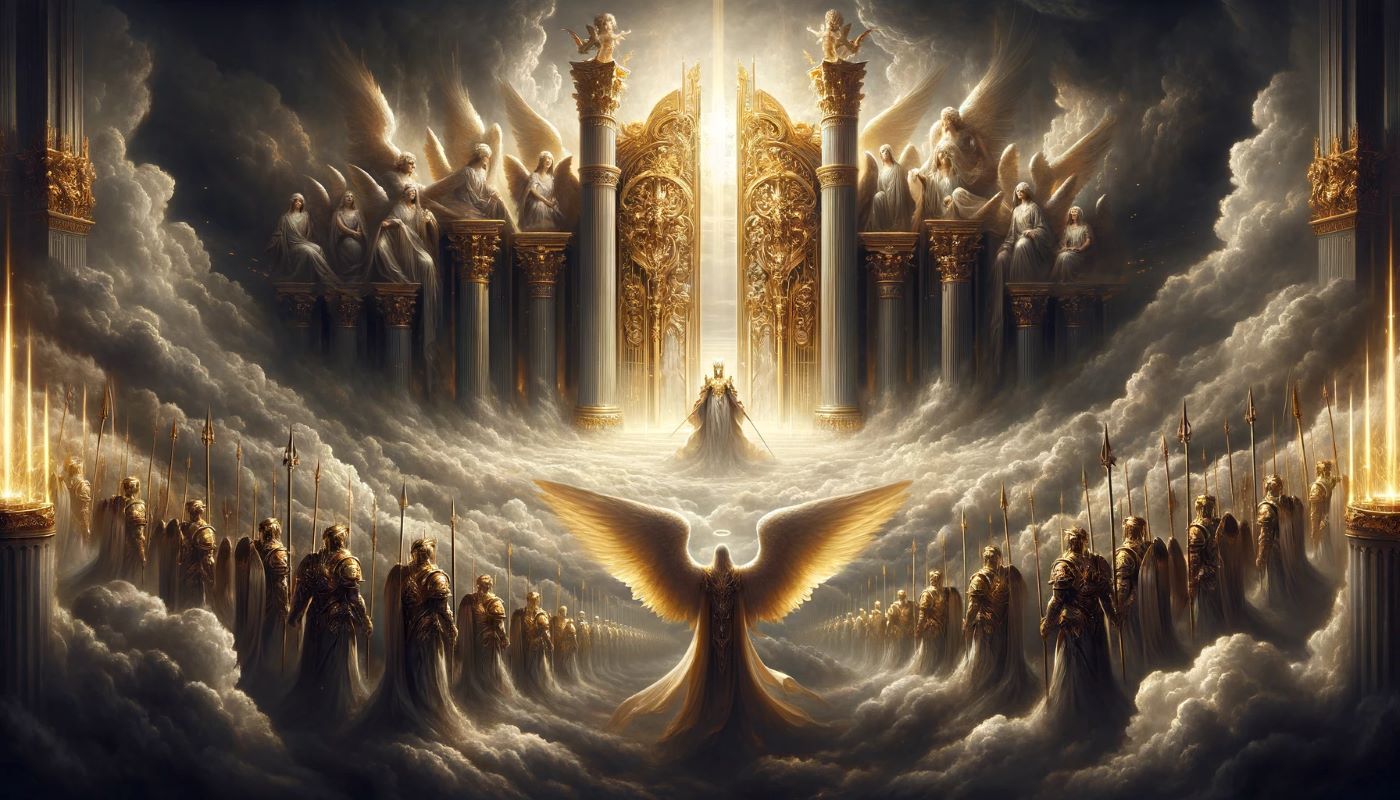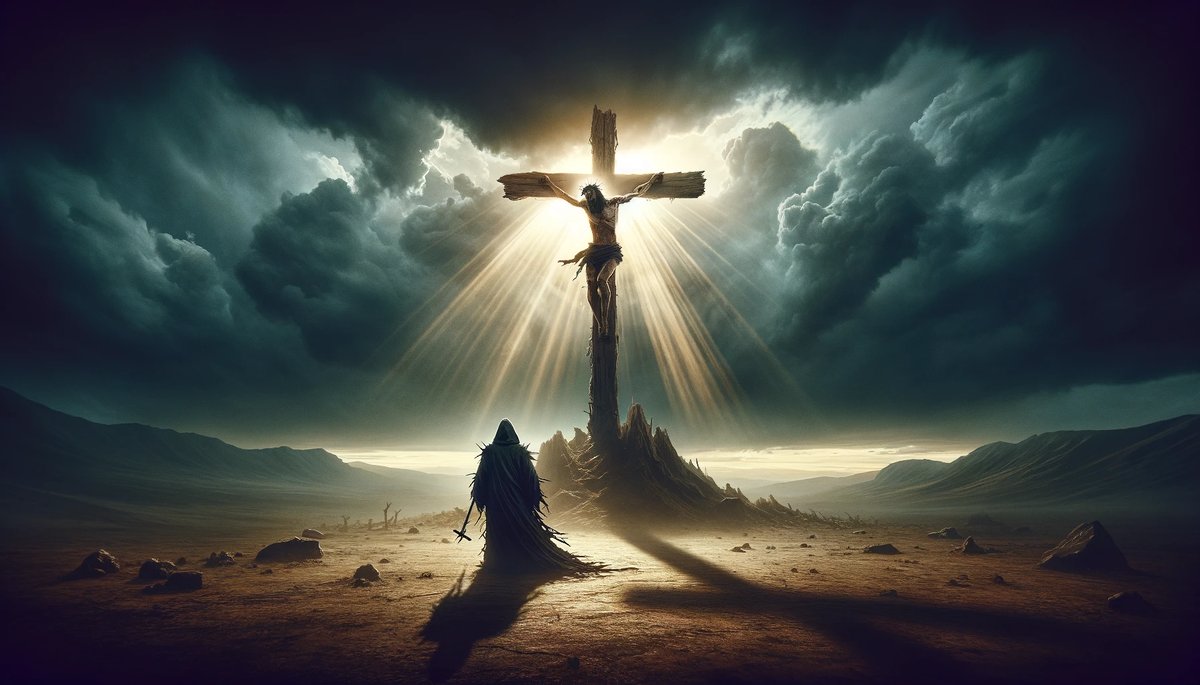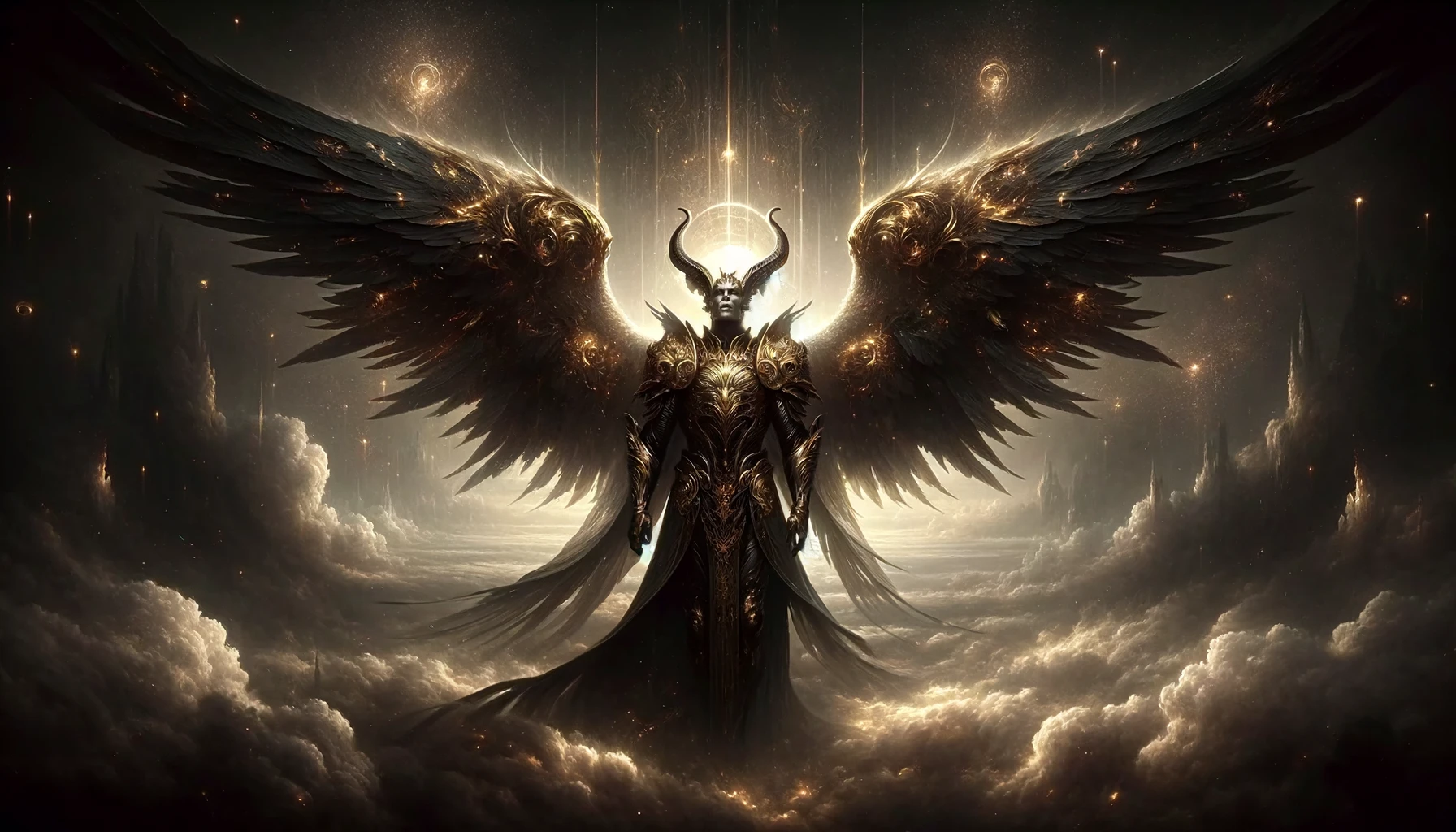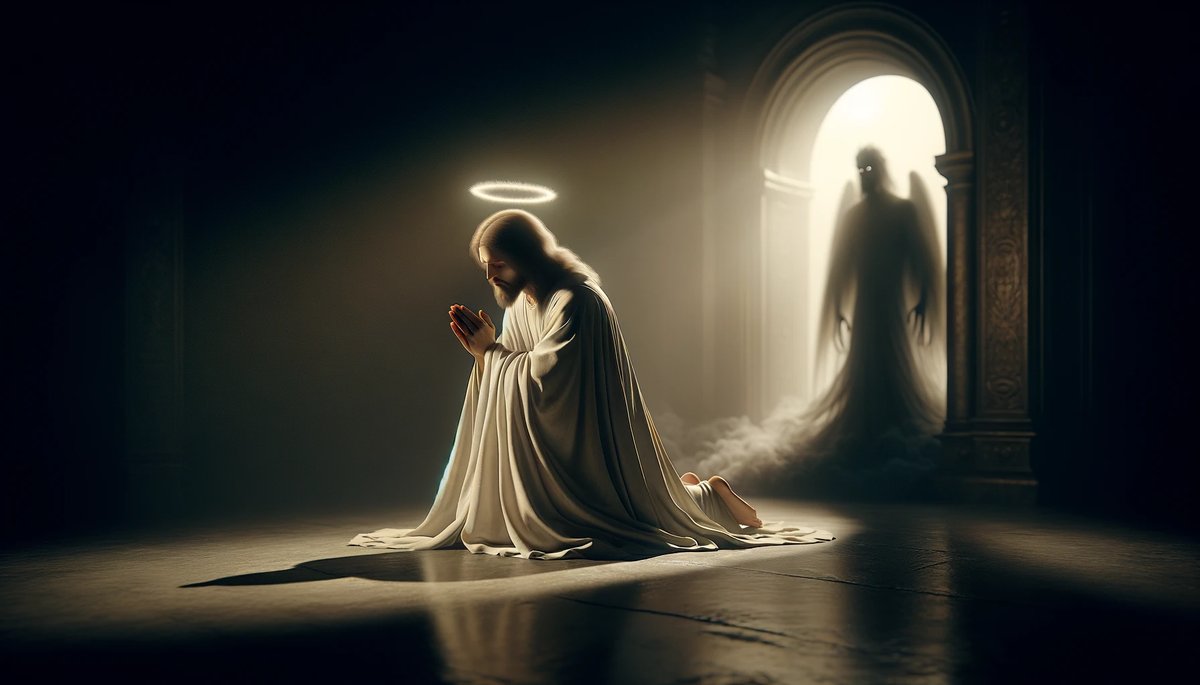Home>Theology and Spirituality>How Satan Fell From Grace


Theology and Spirituality
How Satan Fell From Grace
Published: March 6, 2024
Peter Smith, Editorial Director at Christian.net, combines deep insights into faith, politics, and culture to lead content creation that resonates widely. Awarded for his contributions to religious discourse, he previously headed a major organization for religious communicators, enhancing dialogue on faith's societal impacts.
Explore the theology and spirituality behind Satan's fall from grace. Uncover the origins and significance of this pivotal event in religious history.
(Many of the links in this article redirect to a specific reviewed product. Your purchase of these products through affiliate links helps to generate commission for Christian.net, at no extra cost. Learn more)
Table of Contents
The Origin of Satan
Satan, also known as the Devil, has been a prominent figure in religious and cultural narratives for centuries. The concept of Satan has its origins in various religious texts and traditions, each offering its own interpretation of the character. In Christianity, Satan is often depicted as a fallen angel who rebelled against God, while in other belief systems, the figure of Satan may take on different forms and roles. The origin of Satan is a complex and multifaceted topic that has fascinated theologians, scholars, and believers alike. Let's delve into the origins of Satan and explore the diverse perspectives surrounding this enigmatic figure.
-
In Christian Tradition: According to Christian theology, Satan's origins can be traced back to the angel Lucifer, who was once a high-ranking and esteemed celestial being. Lucifer's pride and desire for power led to his rebellion against God, resulting in his expulsion from heaven and transformation into the malevolent figure known as Satan. This narrative is found in the book of Isaiah and the book of Ezekiel in the Bible, where the downfall of Lucifer is described in vivid and symbolic language.
-
In Jewish Tradition: In Jewish tradition, the figure of Satan is often associated with the concept of the adversary or the accuser. Rather than being a fallen angel, Satan is seen as a servant of God who tests and challenges humanity, as seen in the story of Job. This portrayal of Satan differs from the Christian interpretation and reflects the diverse perspectives within religious traditions.
-
In Islamic Tradition: Within Islam, the figure of Satan, known as Iblis, has a similar origin story to that of Lucifer in Christianity. Iblis was a jinn, a supernatural being created from smokeless fire, who disobeyed God's command to bow to Adam. As a result of his defiance, Iblis was cast out of paradise and became a tempter and deceiver of humanity.
The origin of Satan is a subject of theological debate and interpretation, with different religious traditions offering their own perspectives on the nature and origins of this enigmatic figure. These diverse narratives contribute to the rich tapestry of religious beliefs and provide insight into the complexities of human spirituality and the eternal struggle between good and evil.
Read more: How Is Baptism A Means Of Grace
The Rebellion in Heaven
The rebellion in heaven, as depicted in religious texts and traditions, is a pivotal event that marks the fall of Satan from grace. This dramatic and cosmic rebellion is often portrayed as a celestial war between the forces of good and evil, with profound implications for the spiritual realm and the mortal world. The narrative of the rebellion in heaven varies across different religious traditions, each offering its own interpretation of the events leading to Satan's fall from grace.
-
Christian Perspective: In Christian theology, the rebellion in heaven is associated with the angel Lucifer's pride and ambition. According to the Book of Isaiah and the Book of Ezekiel in the Bible, Lucifer, a highly esteemed angel, aspired to exalt himself above God and was subsequently cast out of heaven. This act of defiance and rebellion against the divine order led to Lucifer's transformation into Satan, the adversary of God and humanity. The rebellion in heaven serves as a cautionary tale of the perils of pride and the consequences of defying God's will.
-
Islamic Perspective: Within Islamic tradition, the rebellion in heaven is linked to the figure of Iblis, a jinn who refused to bow to Adam, the first human, as commanded by God. Iblis' refusal was seen as an act of disobedience and arrogance, leading to his expulsion from paradise. This event is viewed as a test of obedience and submission to God's authority, highlighting the consequences of rebellion and the importance of humility in Islamic teachings.
-
Jewish Perspective: In Jewish tradition, the rebellion in heaven is less prominent, and the figure of Satan is often portrayed as a servant of God rather than a rebellious angel. However, the concept of the adversary challenging the divine order is present in the story of Job, where Satan tests Job's faith and loyalty to God. This narrative reflects the complex interplay between divine sovereignty and the presence of adversarial forces in the spiritual realm.
The rebellion in heaven represents a fundamental aspect of the struggle between good and evil, shaping the cosmologies and moral frameworks of various religious traditions. This cosmic upheaval serves as a cautionary tale, emphasizing the consequences of pride, disobedience, and the enduring conflict between the forces of light and darkness.
The Consequences of Satan's Fall
-
Banishment from Heaven: The primary consequence of Satan's fall from grace is his banishment from the celestial realm. In Christian tradition, Lucifer's rebellion against God led to his expulsion from heaven, resulting in his transformation into the malevolent figure of Satan. This expulsion signifies the irrevocable separation from the divine presence and eternal damnation, symbolizing the dire repercussions of defying God's authority.
-
Corruption and Temptation: Satan's fall also precipitated the corruption of the earthly realm and the temptation of humanity. According to Christian belief, Satan, driven by his malevolence and resentment towards God, seeks to lead humanity astray and sow discord and sin. The narrative of the temptation of Adam and Eve in the Garden of Eden exemplifies Satan's insidious influence, leading to the introduction of sin and suffering into the world.
-
Spiritual Warfare: The consequences of Satan's fall extend to the realm of spiritual warfare, where the forces of good and evil engage in an eternal struggle for the souls of humanity. This cosmic conflict permeates religious teachings, emphasizing the need for spiritual vigilance and resistance against the temptations and deceptions propagated by Satan and his demonic cohorts.
-
The Human Condition: In many religious traditions, the fall of Satan is intricately linked to the human condition, shaping the existential challenges and moral dilemmas faced by individuals. The presence of evil and the capacity for wrongdoing are often attributed to the influence of Satan, highlighting the enduring consequences of his rebellion and its impact on the human experience.
-
Redemption and Salvation: Despite the dire consequences of Satan's fall, religious teachings offer the hope of redemption and salvation. The narrative of Christ's victory over sin and death, as exemplified in Christian theology, provides believers with the promise of deliverance from the clutches of Satan and the restoration of divine grace.
The consequences of Satan's fall resonate across religious and cultural narratives, serving as a cautionary reminder of the enduring struggle between good and evil and the profound implications of spiritual rebellion. This pivotal event continues to shape the moral and theological frameworks of diverse belief systems, underscoring the complexities of human spirituality and the perennial quest for transcendence.
Satan's Role in Different Religions
-
Christianity: In Christianity, Satan is depicted as the ultimate adversary of God and humanity. As the fallen angel Lucifer, Satan embodies pride, rebellion, and malevolence. His role as the tempter and deceiver is exemplified in the narrative of the temptation of Adam and Eve in the Garden of Eden, where he leads humanity astray and introduces sin into the world. Throughout Christian theology, Satan is portrayed as the embodiment of evil, perpetually seeking to undermine the divine order and lead souls towards damnation.
-
Islam: Within Islamic tradition, Satan, known as Iblis, plays a similar role as a tempter and deceiver. His refusal to bow to Adam, as commanded by God, symbolizes his defiance and arrogance, leading to his expulsion from paradise. In Islamic teachings, Satan's role is intertwined with the concept of spiritual testing and the struggle between good and evil. His influence is seen as a test of human faith and resilience, emphasizing the importance of resisting temptation and remaining steadfast in one's devotion to God.
-
Judaism: In Jewish tradition, the role of Satan is nuanced, with the figure often serving as an adversary or accuser rather than a malevolent tempter. The portrayal of Satan in Jewish texts, such as the story of Job, reflects a complex relationship with the divine, where Satan acts as a tester of human faith and loyalty to God. This multifaceted role underscores the diverse interpretations of Satan within the Abrahamic traditions, highlighting the complexities of his character and influence.
-
Other Religions: Beyond the Abrahamic faiths, the concept of a malevolent or adversarial figure is present in various religious traditions. In Zoroastrianism, the dualistic struggle between the forces of good and evil is personified in the figures of Ahura Mazda and Angra Mainyu, representing the cosmic battle between light and darkness. Similarly, in Hinduism, figures such as Ravana and the asuras embody traits associated with defiance and malevolence, challenging the divine order and testing the resolve of virtuous beings.
Satan's role in different religions reflects the diverse interpretations of the figure across cultural and theological contexts. Whether as a malevolent tempter, a spiritual adversary, or a symbol of cosmic dualism, the portrayal of Satan underscores the enduring significance of the struggle between good and evil within the human experience.
The Influence of Satan in Modern Culture
The influence of Satan in modern culture extends across various artistic, literary, and popular media, reflecting the enduring fascination with the figure of the devil and the themes of temptation, rebellion, and spiritual conflict. From literature and film to music and visual arts, the portrayal of Satan and demonic entities has permeated contemporary culture, shaping narratives and evoking profound existential questions.
-
Literature and Film: In literature and film, the archetype of Satan has been a recurring motif, often depicted as a complex and enigmatic character. From classic works such as John Milton's "Paradise Lost" to contemporary novels and movies, the portrayal of Satan as a tragic figure or a seductive tempter has captivated audiences. The exploration of moral ambiguity, the allure of forbidden knowledge, and the consequences of spiritual rebellion are themes that continue to resonate in modern storytelling, reflecting the timeless allure of the devil's character.
-
Music and Art: The influence of Satan is also evident in the realm of music and visual arts. In music, genres such as heavy metal and rock have often incorporated themes of rebellion, anti-establishment sentiments, and provocative imagery associated with the devil. Artistic representations of Satan and demonic figures have served as a source of inspiration for countless artists, evoking themes of darkness, temptation, and the human psyche's shadow aspects. These creative expressions reflect the enduring fascination with the enigmatic and multifaceted nature of the devil's character.
-
Popular Culture and Media: In popular culture and media, the portrayal of Satan and demonic entities has permeated various forms of entertainment, from television shows to video games. The depiction of supernatural forces, occult themes, and moral dilemmas associated with the devil's influence has captured the imagination of audiences worldwide. The enduring appeal of narratives centered on the struggle between good and evil, the allure of power, and the complexities of human nature underscores the pervasive influence of Satan in modern cultural expressions.
-
Social and Psychological Reflections: Beyond artistic and entertainment contexts, the influence of Satan in modern culture also reflects broader social and psychological reflections. The fascination with the figure of the devil and themes of temptation and moral ambiguity speaks to humanity's perennial quest for meaning, identity, and the exploration of existential questions. The portrayal of Satan in modern culture serves as a mirror to the complexities of the human condition, inviting contemplation on the nature of good and evil, free will, and the enduring allure of rebellion and defiance.
The influence of Satan in modern culture encompasses a diverse array of artistic, literary, and popular expressions, reflecting the enduring fascination with the figure of the devil and the timeless themes of temptation, rebellion, and spiritual conflict. This pervasive influence underscores the enduring significance of the devil's character in shaping contemporary narratives and evoking profound existential questions within the cultural landscape.















